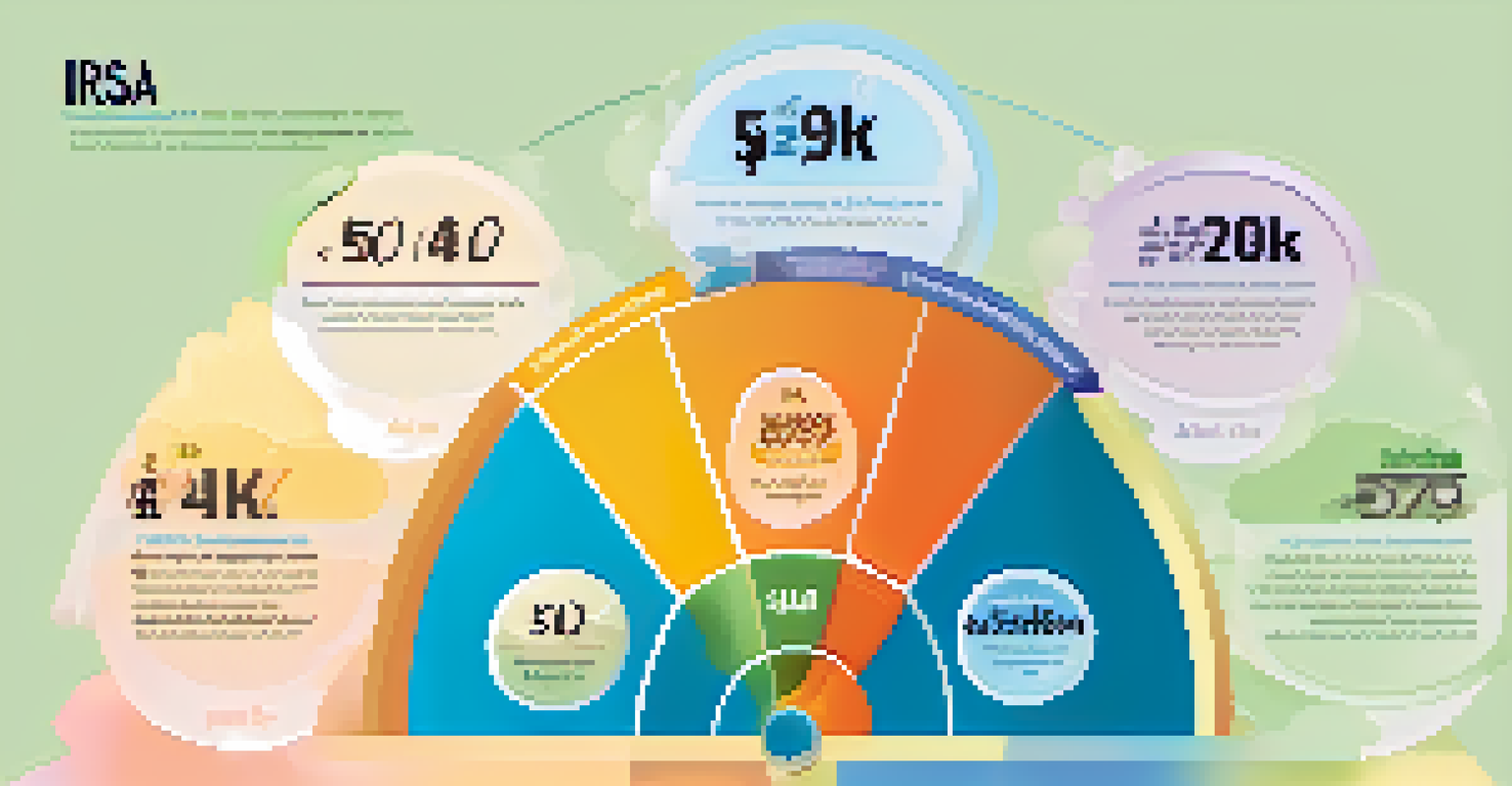Tax-Advantaged Investment Accounts for Millennials

Understanding Tax-Advantaged Investment Accounts
Tax-advantaged investment accounts are financial tools that offer benefits such as tax savings and incentives for saving. These accounts are designed to encourage individuals to save for specific goals, like retirement or education, while providing some form of tax relief. For millennials, who often juggle student loans and rising living costs, understanding these accounts can be a game changer for wealth building.
The best time to plant a tree was twenty years ago. The second best time is now.
There are several types of tax-advantaged accounts available, including Individual Retirement Accounts (IRAs), Health Savings Accounts (HSAs), and 401(k) plans. Each of these accounts has its unique features and tax benefits, making them suitable for different financial goals. Knowing how these accounts work can help millennials make informed decisions about where to invest their money.
In the following sections, we will explore various types of tax-advantaged investment accounts, their benefits, and how millennials can leverage them to maximize their financial growth.
The Benefits of Using IRAs for Retirement
Individual Retirement Accounts (IRAs) are popular among millennials as they provide significant tax benefits for retirement savings. With a Traditional IRA, you can enjoy tax deductions on contributions, which can lower your taxable income for the year. On the other hand, Roth IRAs allow your investments to grow tax-free, and withdrawals in retirement are also tax-free, making them an attractive option.

For millennials just starting their careers, a Roth IRA can be especially appealing. Since many young professionals may be in a lower tax bracket early on, paying taxes now on contributions means they can take advantage of tax-free growth later. This can lead to substantial savings when it comes time to retire.
Tax Benefits of Investment Accounts
Tax-advantaged investment accounts, like IRAs and 401(k)s, provide valuable tax savings and incentives for millennials to save for retirement and education.
Additionally, IRAs offer a wide range of investment choices, from stocks to bonds to mutual funds. By diversifying your investments within an IRA, you can create a balanced portfolio that aligns with your risk tolerance and long-term financial goals.
Maximizing 401(k) Plans at Your Workplace
If your employer offers a 401(k) plan, it's a fantastic way to save for retirement while enjoying tax advantages. Many companies also match employee contributions up to a certain percentage, which is essentially free money that can significantly boost your retirement savings. Taking full advantage of this match is a smart financial strategy for millennials.
An investment in knowledge pays the best interest.
Contributions to a 401(k) are made pre-tax, meaning you won't pay taxes on the money you put in until you withdraw it in retirement. This can help lower your current taxable income, giving you immediate tax benefits. Furthermore, many 401(k) plans offer a variety of investment options, allowing you to build a diversified portfolio.
It's important to start contributing as early as possible to maximize the benefits of compound growth. Even small contributions can grow significantly over time, thanks to the power of compounding interest, making your future self grateful for the decisions you make today.
Health Savings Accounts: A Dual Benefit
Health Savings Accounts (HSAs) are often overlooked but are incredibly beneficial for millennials, especially those with high-deductible health plans. HSAs allow you to save money for medical expenses while enjoying tax advantages. Contributions are tax-deductible, and withdrawals for qualifying medical expenses are tax-free, making it a smart choice for health-conscious individuals.
Another appealing feature of HSAs is that they can act as a long-term investment account. Funds in an HSA can roll over year after year, and if you don't need to use the money for immediate medical expenses, you can invest those funds for future growth. This means you could use an HSA as a supplemental retirement account.
Start Early for Maximum Growth
Beginning to invest early allows millennials to leverage the power of compound interest, significantly increasing their wealth by retirement.
By combining health savings with investment opportunities, millennials can ensure they're financially prepared for both medical expenses and retirement. It's like having your cake and eating it too—saving for health costs while investing for the future.
Education Savings with 529 Plans
For millennials looking to save for education, 529 plans offer a great tax-advantaged investment option. These plans allow you to save for future education costs while enjoying tax-free growth and tax-free withdrawals for qualified education expenses. This means you can save for your children's education or even your own further education without worrying about taxes eating into your savings.
One of the most appealing aspects of 529 plans is their flexibility. Many plans also allow you to change beneficiaries or use the funds for various educational institutions, from colleges to trade schools. This adaptability makes 529 plans ideal for families who want to ensure their loved ones have access to quality education.
Moreover, some states even offer tax deductions or credits for contributions made to 529 plans, providing an additional incentive to save. This dual benefit of tax savings and educational funding makes 529 plans a smart investment for millennials planning for the future.
The Importance of Starting Early
One of the most crucial aspects of investing in tax-advantaged accounts is the importance of starting early. The earlier you begin contributing, the more time your money has to grow through compound interest. For millennials, this means that even small contributions can lead to substantial wealth over time, thanks to the magic of compounding.
Consider this: if you start investing in your 20s, even modest monthly contributions can grow into a significant nest egg by retirement age. This can provide you with financial freedom and peace of mind when it's time to enjoy your golden years. Plus, starting early allows you to take on more risk in your investments, which can lead to higher returns.
Create a Balanced Strategy
Developing a diversified investment strategy across various tax-advantaged accounts can enhance financial security and growth potential.
By prioritizing your financial future now and taking advantage of tax-advantaged accounts, you set yourself up for success. It's all about making smart choices today that will pay off later, paving the way for a comfortable retirement.
Creating a Balanced Investment Strategy
Navigating the world of tax-advantaged investment accounts can be overwhelming, but creating a balanced investment strategy can simplify the process. Start by assessing your financial goals and risk tolerance, which will help you determine the best combination of accounts for your needs. A mix of IRAs, 401(k)s, and HSAs can provide a well-rounded approach to saving and investing.
It's also essential to diversify your investments within these accounts. By spreading your money across different asset classes, such as stocks, bonds, and mutual funds, you can reduce risk and increase the potential for growth. This strategy helps ensure that your portfolio remains resilient, even in fluctuating markets.

Finally, regularly review and adjust your investment strategy as your life changes. Whether you're starting a new job, buying a home, or welcoming a child, your financial needs will evolve. Staying proactive and flexible with your investment strategy will help you stay on track toward your long-term financial goals.